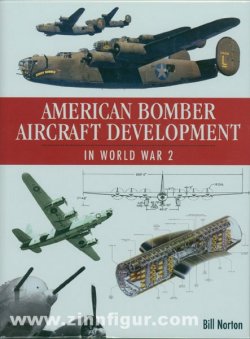Home > All Titles > Adult Non-Fiction > Aviation & Military > Aviation Books > American Bomber Aircraft Development

This title examines the US Bombers of World War 2, including experimental and lesser-known military aircraft variants, including the aircraft developed for both the US Army and Naval air forces. In order to cover the subject coherently the author selects from the multitude of design concepts and proposals from the period to give adequate coverage of the programmes that advanced beyond the preliminary stages and contributed to the rapid developments in all aspects of bomber aircraft design during the war. The author discusses the technological maturation of US aircraft under the pressure of war with emphasis on high technology and experimental models. The war years were particularly noted for the rapid advance of electronic navigation, communications, radar, and electronic warfare that greatly aided bombing accuracy and mission success. The bold moves to long-range heavy bombers and super-heavy intercontinental bombers (the latter solely an American undertaking) further spurred system-intensive aircraft that were important transitions to the jet bombers that followed. How all this work contributed to actual fielded weapon systems is a particular point, with discussions of failures, course changes, and close-run competitions. The interaction with allies, knowledge of enemy systems or reaction to their introduction, and the effect of mobilizing the nation’s industries for total war is touched on, together with consideration of the effects of emergency measures, haste, budgets, resources, evolving doctrine and strategy, the general course of the war, Allied achievement of air superiority, and leadership biases.